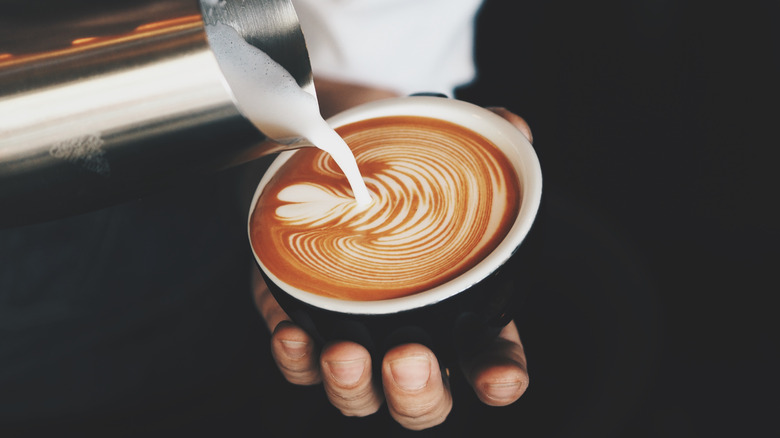Why You Should Consider Adding Barista Milk To Your Morning Cup Of Coffee
From espresso machines to moka pots, you can go all out acquiring coffee essentials baristas swear by, but it's hardly worth it without the right type of milk. So, we turn to barista milk — a version with the perfect ingredient ratios to give you dreamily foamy coffee. Among the reasons we love a cup of coffee is its sensory appeal, particularly that of mouthfeel. Ever noticed how fatty foods are more palatable than fat-free versions? It's the same with barista milks in this case, whether dairy or non-dairy.
Their relatively higher fat content compared to whole milk means barista milks lend a rich and creamy mouthfeel to coffee and also complement its bold taste. However, don't think that all high-fat milk is barista milk, such as heavy cream. The art of this super milk is that its fat content is high enough to smoothen coffee and low enough not to subdue its taste.
Barista milks are also specially formulated for steaming and foaming espresso. Their higher protein content allows them to create stable microfoams on top of your coffee. We all know the disappointment of watching foam bubbles disappear before the coffee cup barely touches our lips — but not with barista milks in play. They create firm bubbles that hold up long enough so that you can showcase your impressive latte art.
Regular milk vs barista milk: a difference you can taste
Barista or super milk is milk made specially for coffee. It differs from regular (whole) milk in its formulation, so while the two often contain the same ingredients, their nutrition profiles differ. You'll find that barista milk contains around 4.2% fat, an ideal percentage to produce a glossy foam that looks and feels good on the palate. This is why you can steam olive oil and milk together for a creamier coffee experience. Regular dairy milk, on the other hand, contains 3.25% fat.
Their protein profiles differ, too. While a cup of barista milk can contain around 12 grams of protein, a cup of regular dairy milk sits at around 3 grams. Proteins in milk (whey protein and casein) are the key elements of milk foaming. They protect air bubbles when they form so that they're stable — thus the higher the protein content, the more stable the milk foam. This perfect ratio of fats to proteins makes barista milks a superior option for coffee.
Adding to its coffee-forward theme, barista milk is full cream that underwent a light homogenization process, further contributing to a long-lasting foam. To understand homogenization, think of milk's fat globules and how they naturally float to the top because they're less dense than the water in milk. Without homogenization, you'd have to shake the milk so that the fat and water particles fully combine. Post-homogenization, however, you won't have to shake your milk — simply pour it.

